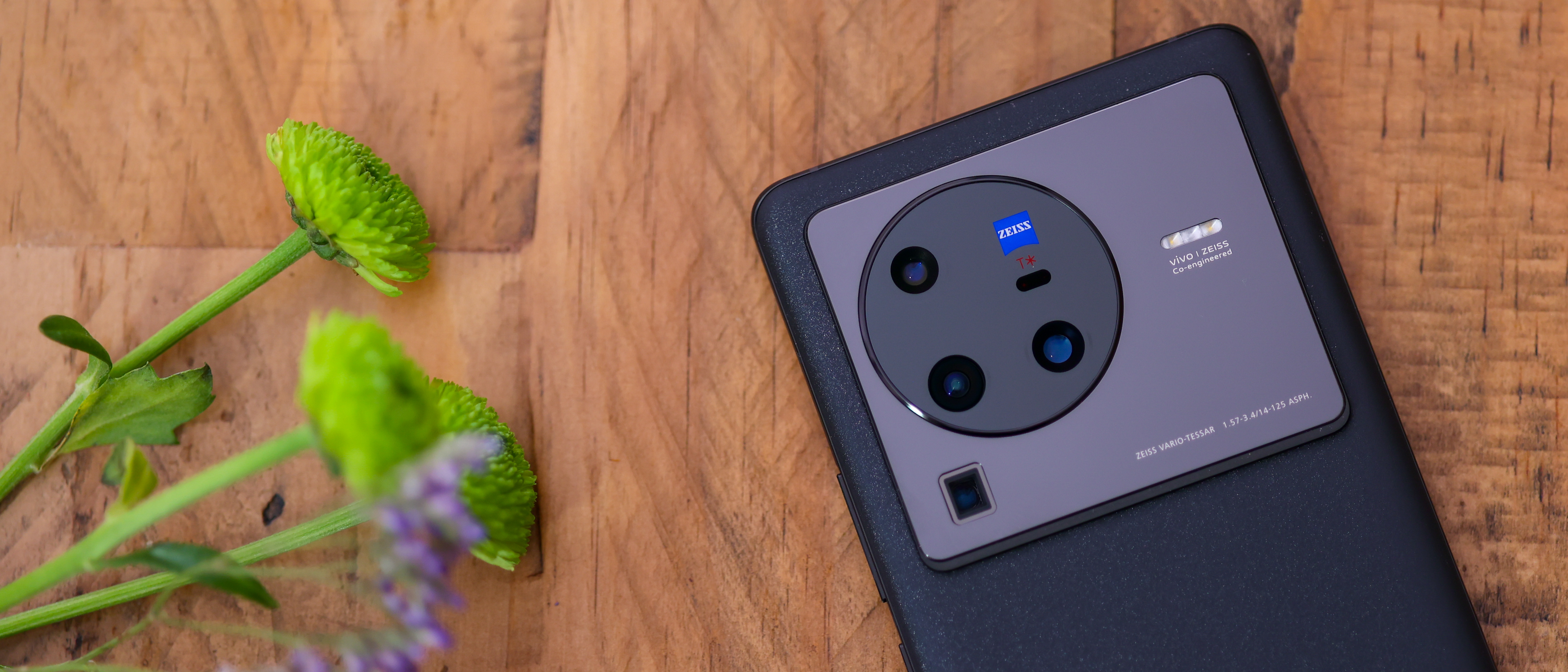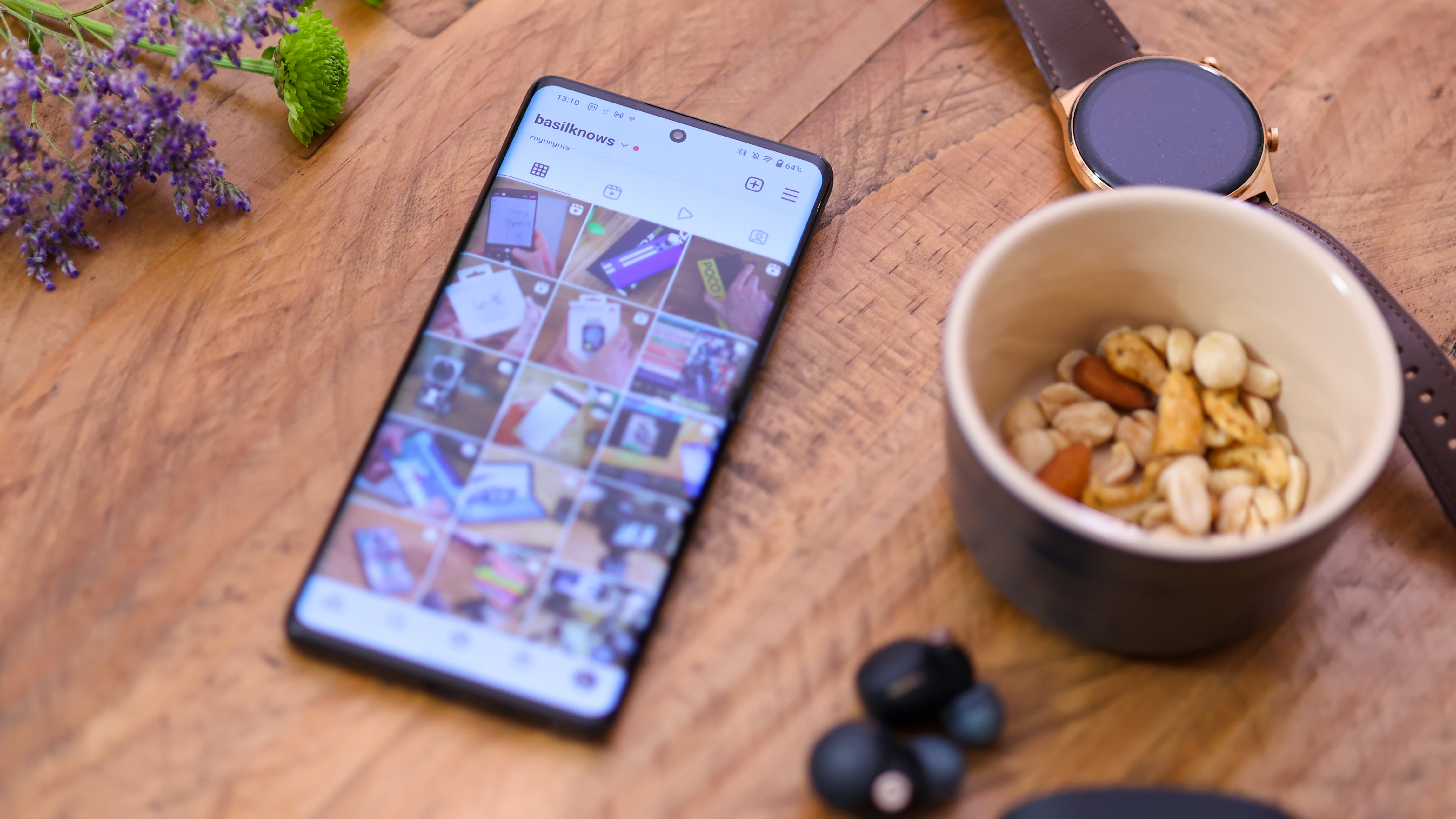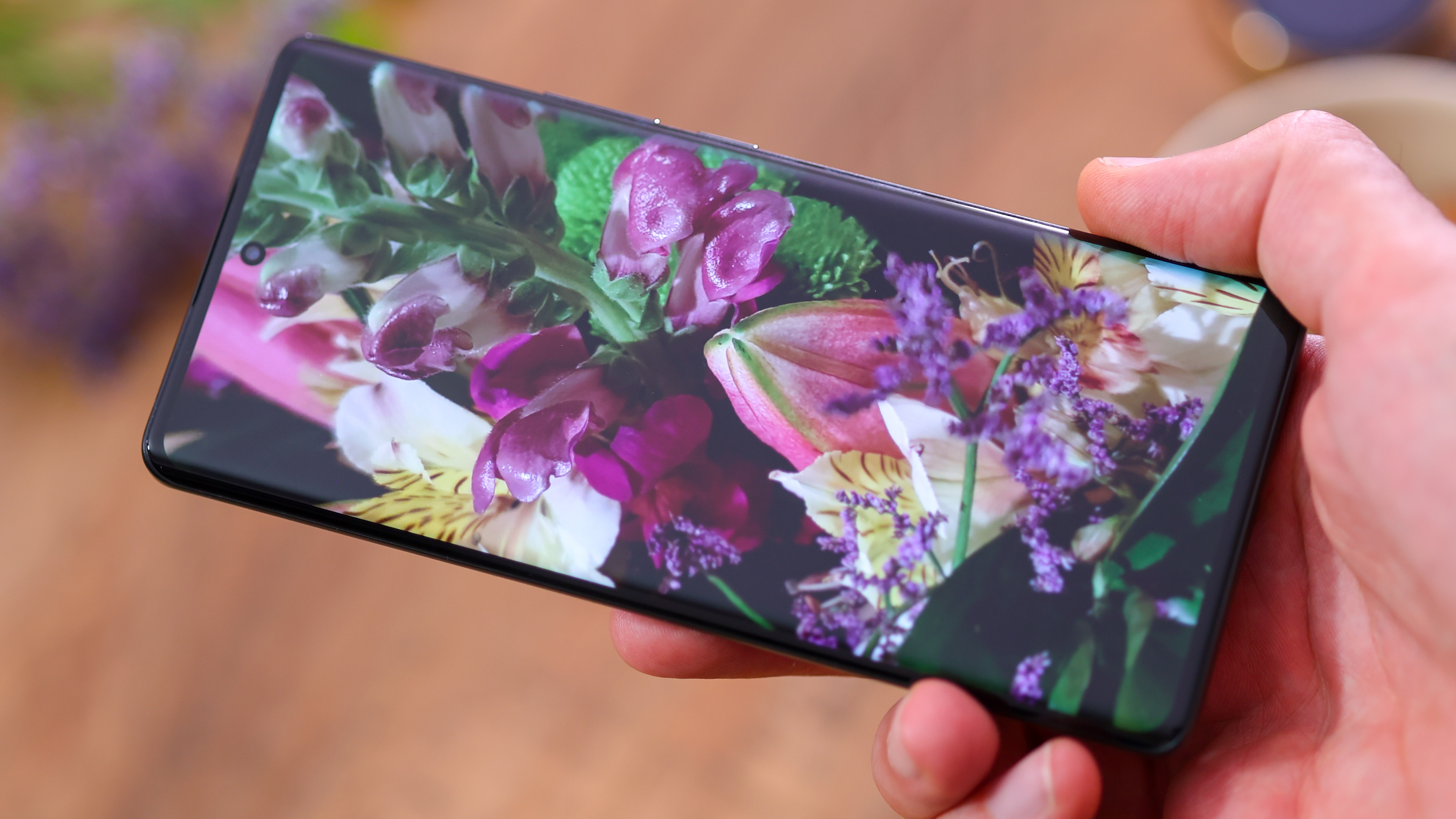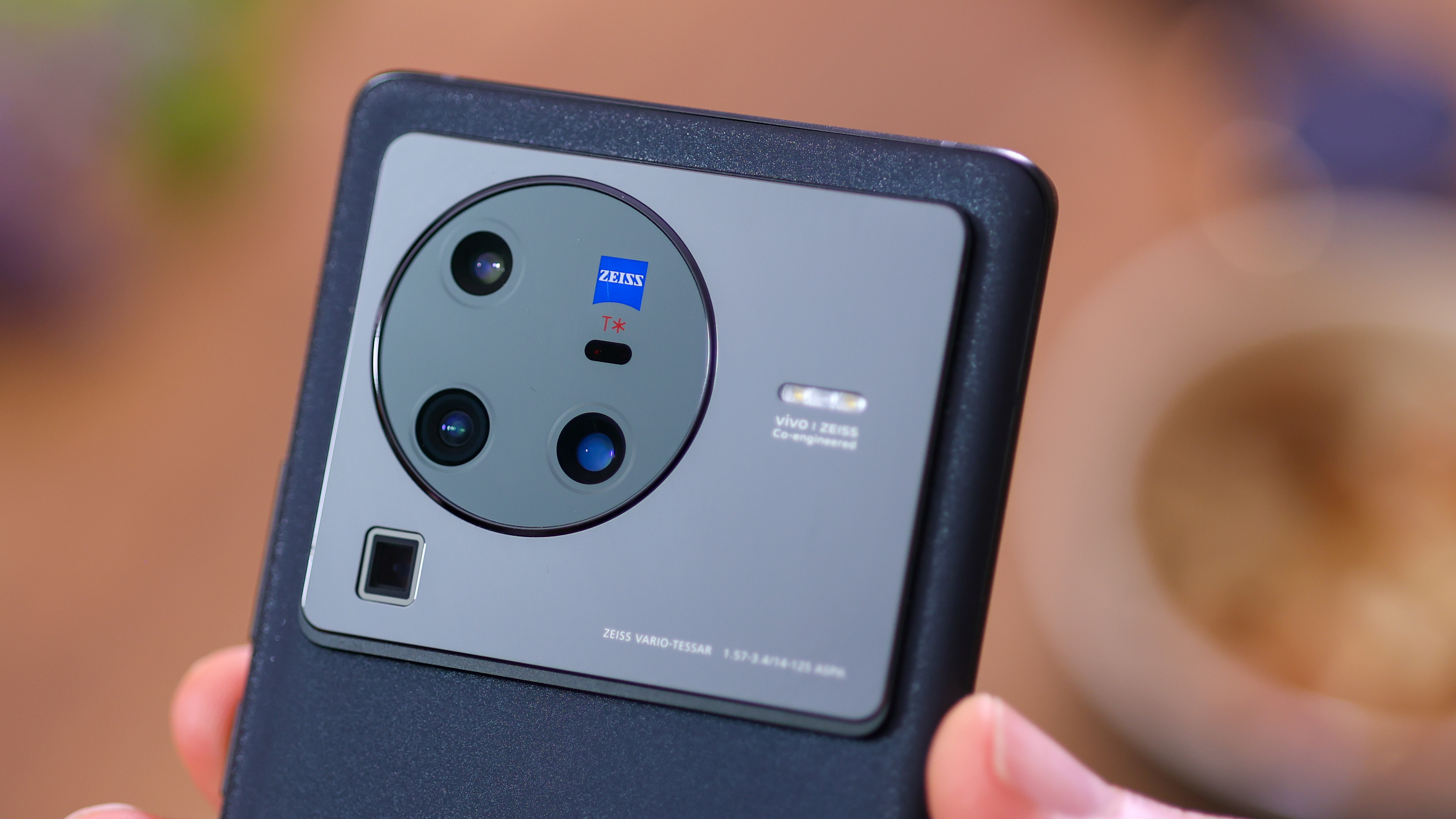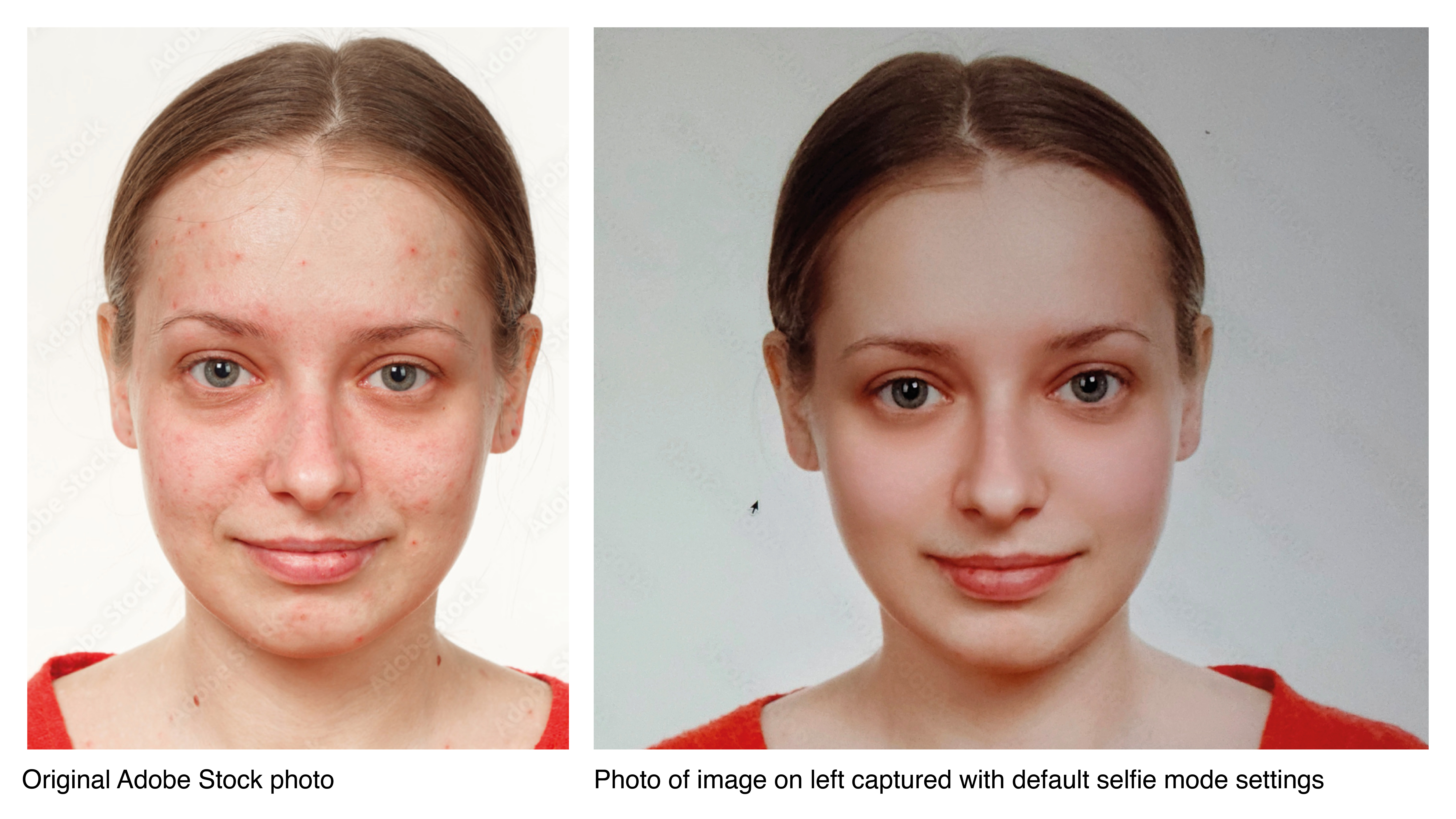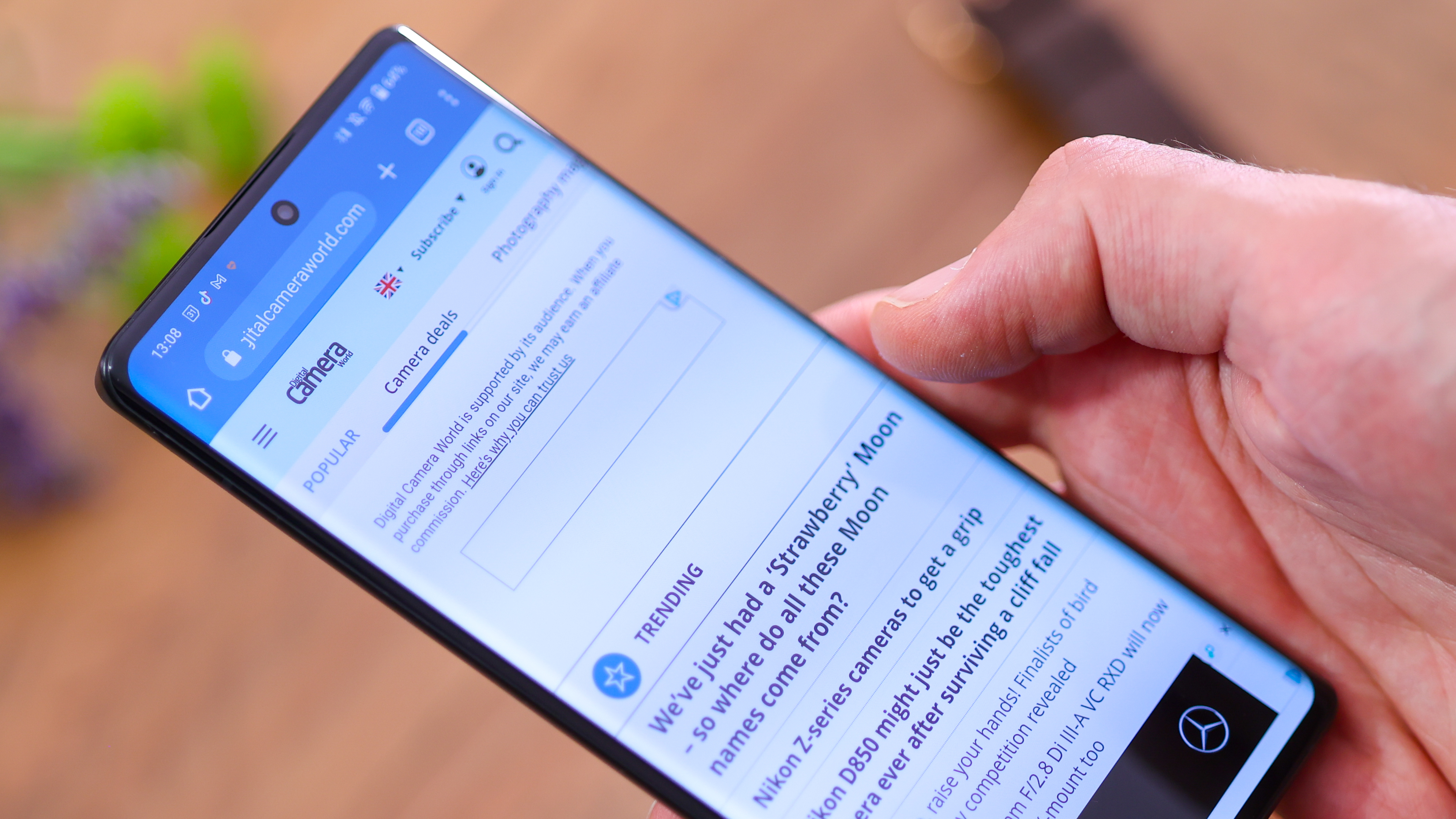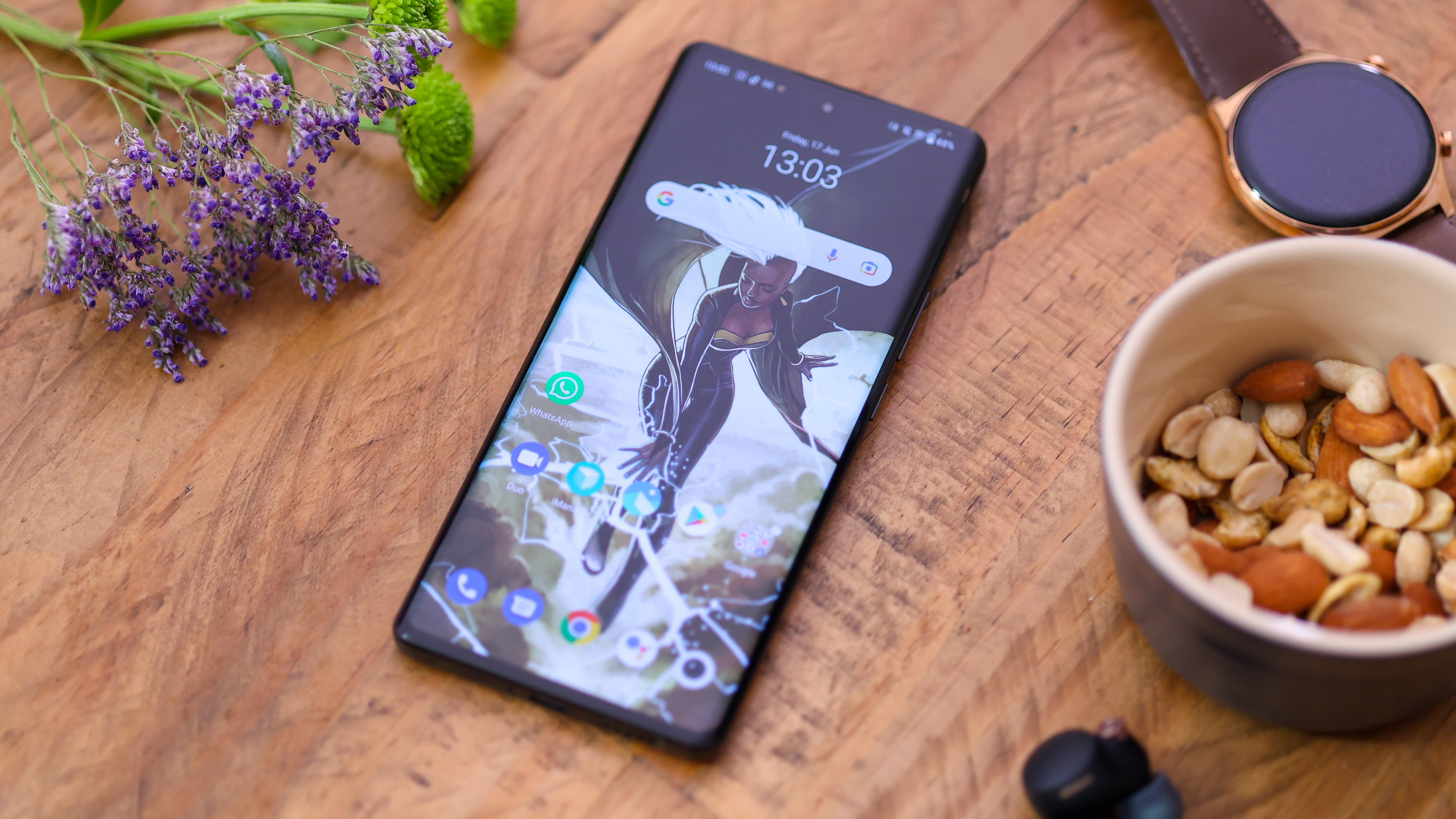Digital Camera World Verdict
Vivo's X80 Pro is a joy to use, from its sleek design, capable camera system, mighty 50mm gimbal-stabilized lens, and its excellent screen. While the phone's periscope zoom camera isn't best-in-class, the rest of the camera mix is great. Its main sensor is big, and there's an auto-focusing ultra-wide too. With its high price, we'd expect nothing less, but if cost doesn't put you off, Vivo's made a premium phone that's easy to recommend.
Pros
- +
Sleek styling and included case
- +
Powerful wide, 50mm and ultra-wide cameras
- +
Excellent display quality
- +
Fast wired and wireless charging
Cons
- -
Periscope camera loses out to S22 Ultra
- -
Gets warm when gaming
- -
Very expensive
- -
Overkill beauty mode
Why you can trust Digital Camera World
Vivo has made some excellent camera phones, especially since partnering with Zeiss and pioneering mobile gimbal tech in the X51 5G – the brand's first major Western release.
While in the past, it's taken as long as half a year for Vivo's phones to be announced outside China after their initial unveiling, the X80 Pro 5G, Vivo's 2022 flagship, has been confirmed for the UK after just a couple of months. Costing £1,199 (approximately $1,430), though, this is one very expensive flagship.
For the same price as the X80 Pro, you could buy an iPhone 13 Pro Max or Samsung S22 Ultra. Vivo's phone has to be seriously good if it wants to earn a spot on your wishlist and our best camera phones of 2022 podium.
The X80 Pro 5G's camera definitely looks promising. At the helm is a large, 1/1.3" 50MP sensor. Vivo adds its gimbal tech to the 50mm portrait lens, and there's a periscope camera too. Better still, the ultra-wide camera has autofocus, and it also doubles up as a macro camera.
The question is, can this powerful camera phone justify its dearer-than-an-iPhone price?
Vivo X80 Pro 5G design and screen
The Vivo X80 Pro experience feels special before you even get to the phone. Open the box and in addition to one very sleek-looking smartphone which we'll come onto, there's the best-looking case we've ever seen included with a phone. Complete with faux-leather texturing. Instantly – this made a great first impression.
The front of the phone is taken up by a broad, bold curved screen that has tiny bezels and a centered selfie camera punch-hole cutout. With its curved back tapering in to meet the front, while the X80 Pro is actually a beefy phone on paper, in the flesh, it still feels elegant, with a relatively thin metal frame along the sides.
The best camera deals, reviews, product advice, and unmissable photography news, direct to your inbox!
We're much more concerned about the back of the phone than the front, given the fact that's where you'll find the Zeiss-branding and quad-camera system. An interesting layout, the camera surround is a boldly raised rectangle, in which you'll find three cameras grouped together within a circle, and a flash and periscope camera floating in its orbit.
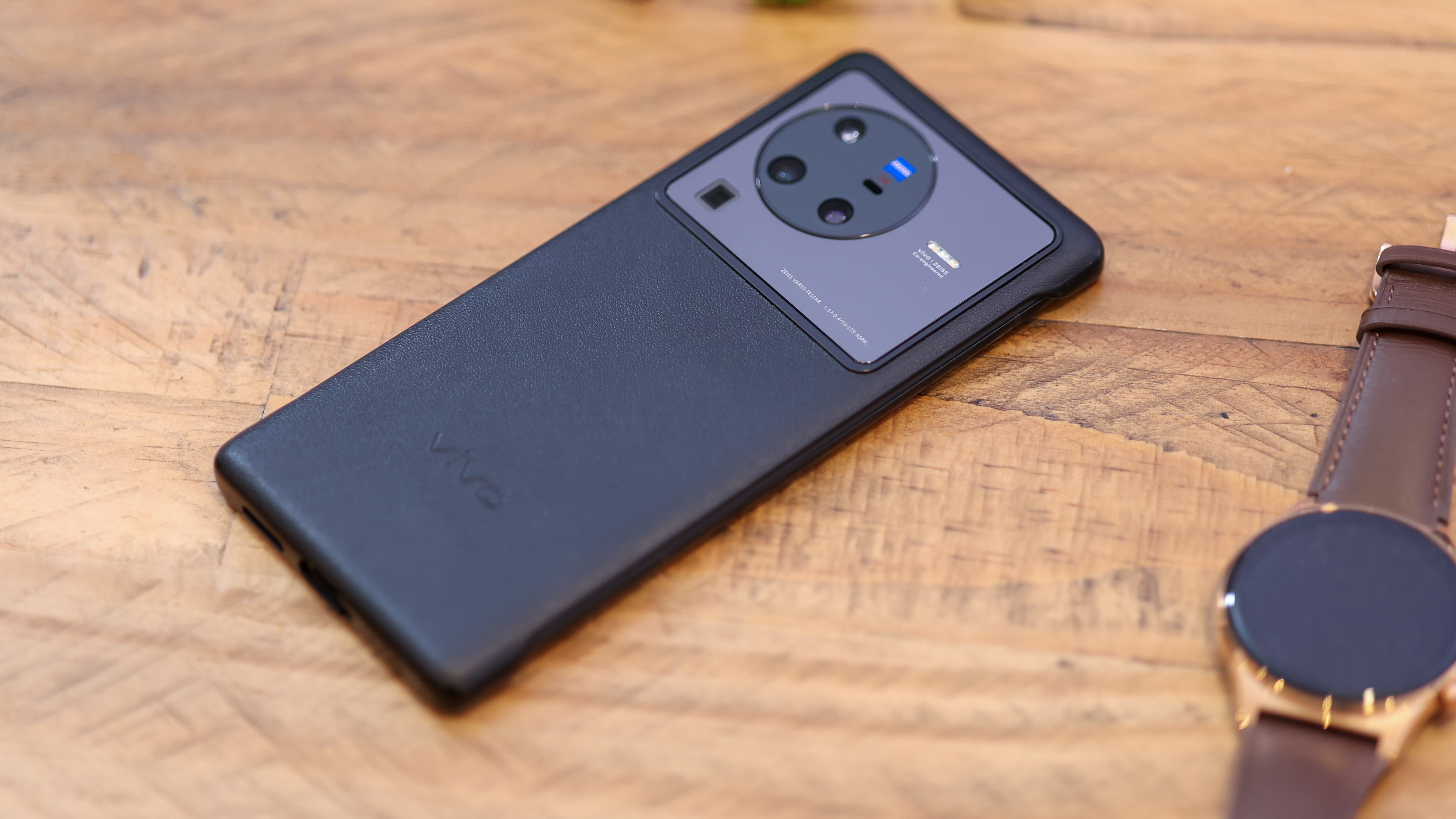
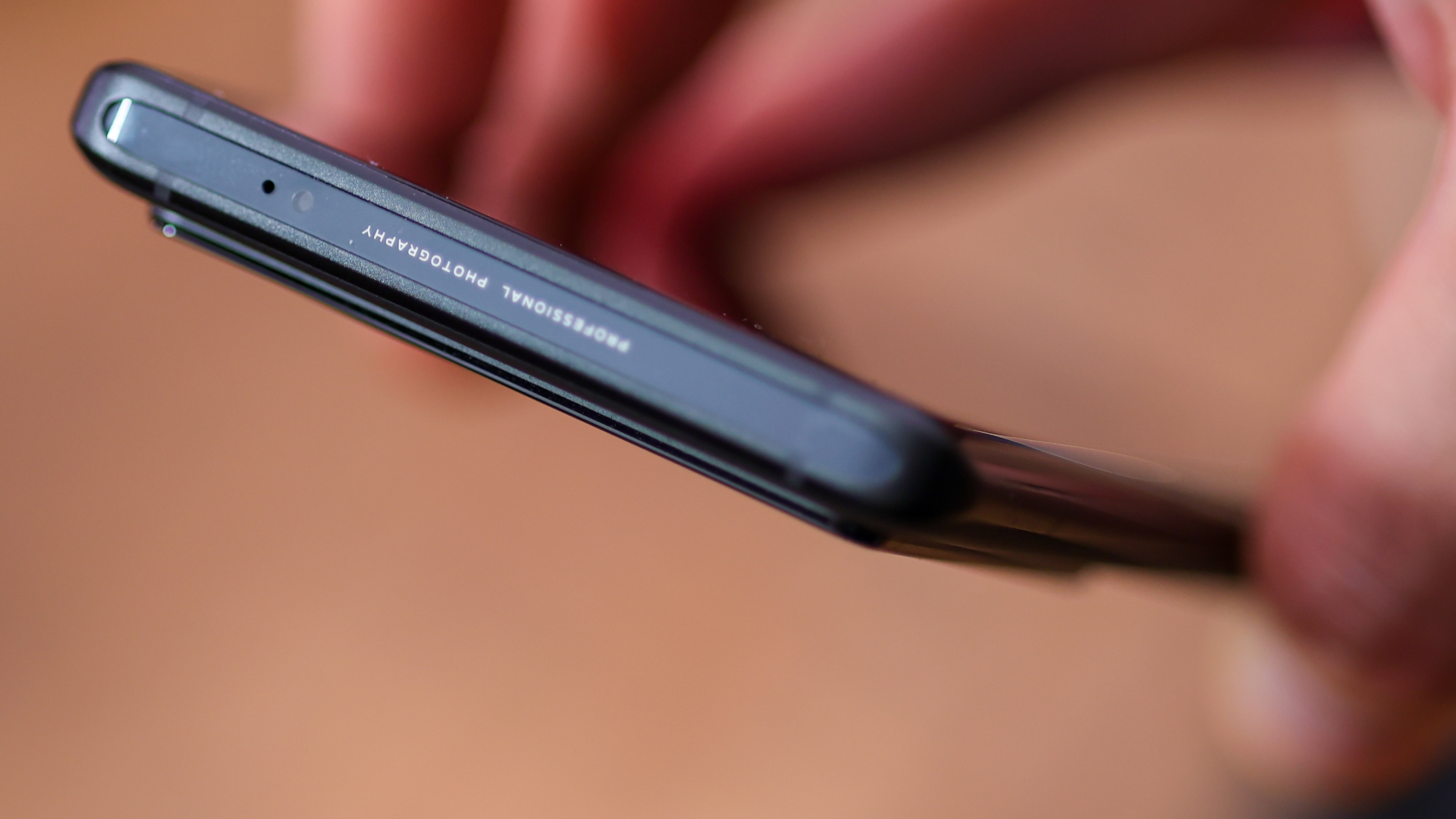
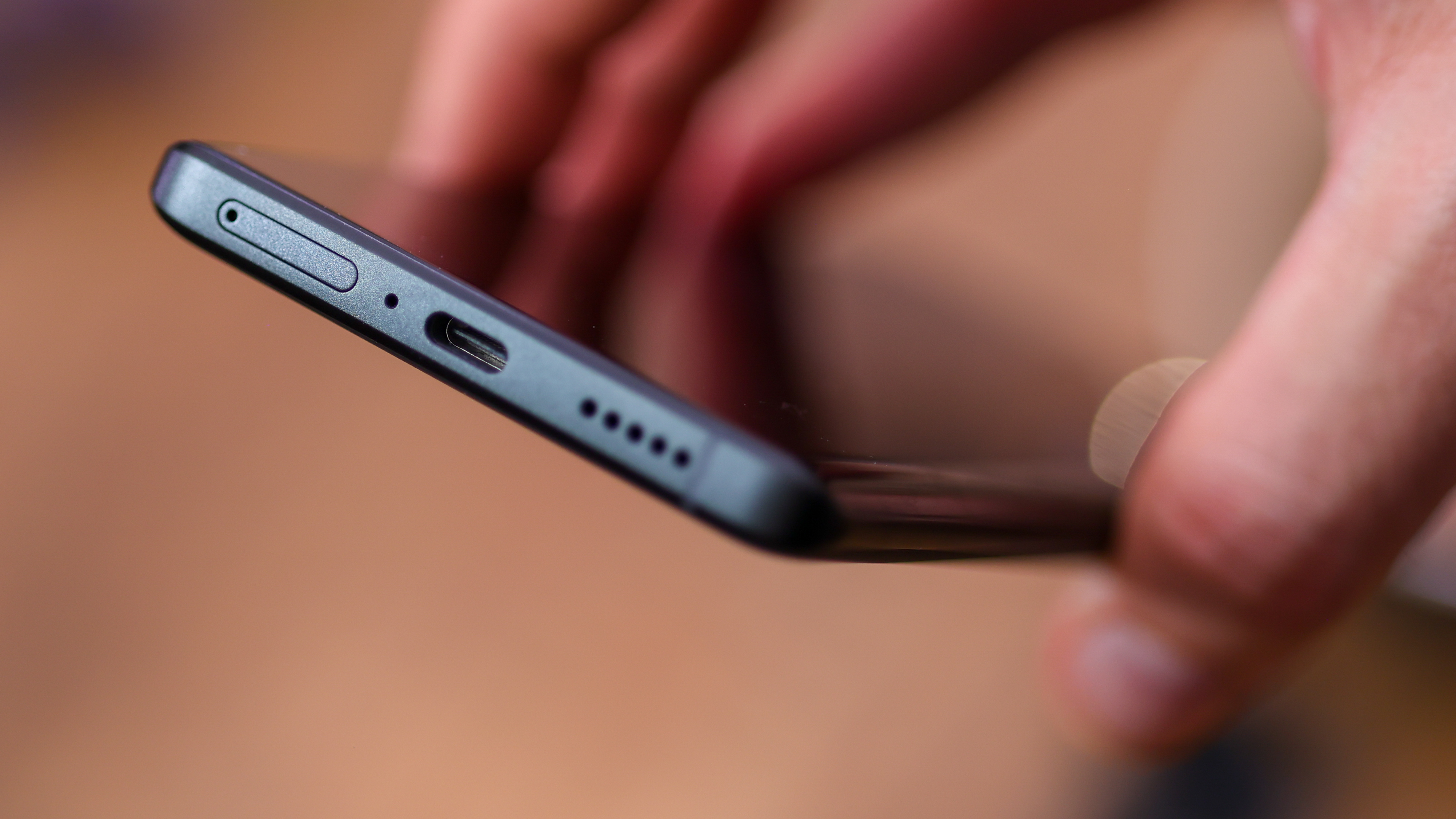
A mirror finish and a whole lot of size mean that the Vivo X80 Pro 5G's camera bump is exceptionally attention-grabbing. That said, we do like the attention Vivo's paid to make the camera portion of the design feel special – call us maximalists.
As for the phone's construction, it's a matte glass and metal mix. The glass on the front and back hasn't been confirmed as Gorilla Glass – so we can't comment on its scratch resistance. That said, the phone does ship with a pre-fitted screen protector and the phone's IP68 water and dust resistant – so there's some peace of mind to be had on that front.
With a USB-C port and a SIM slot at the base, and all the buttons on the right side of the phone, there aren't any surprises, though the infrared blaster at the top is a nice-to-have feature, turning the phone into a TV remote control. Unlike the other Zeiss-co-branded smartphone on the scene, the Sony Xperia 1 IV, there's no physical camera button, so while this is a phone made with photography enthusiasts in mind, it isn't quite as traditional as Sony's flagship line.
It would be a crying shame if an all-screen-fronted phone like the Vivo X80 Pro 5G had a bad screen – luckily, it doesn't. In fact, this is one glorious, large, curved AMOLED display with a smooth 120Hz refresh rate and a balanced natural color profile.
Vivo's making sure all the screen-cred acronyms are checked – this is a latest-gen LTPO3 panel, is 10-bit, showcasing 1B colors, and in turn, supports HDR10+ video. With a peak brightness of up to 1500 nits in auto mode, it also gets bright enough to easily see outdoors, and being a quality AMOLED screen, it dims right down too.
With its large 6.87-inch screen and sky-high 3200×1440 (WQHD+) resolution, the Vivo X80 Pro is sharp and immersive, with 517 pixels in every inch, making it one of the crispest phones you can buy.
Vivo X80 Pro 5G camera
The Vivo X80 Pro’s quad-camera introduces Sony's large IMX 866 1/1.3" sensor on the primary camera. With an f/1.6 lens matched with OIS, this is one of the best-specced main cameras of any phone we've tested.
Vivo has migrated its mobile gimbal tech to the first telephoto camera – a 50mm, f/1.9 lens matched with a 1/2.93" Sony IMX 663 sensor. While the specs are less impressive, the gimbal stabilization should help eke out decent performance here.
The phone's far-reaching telephoto camera is a periscope module with an 8 MP resolution 1/4.4" sensor. That's matched with an f/3.4 lens with OIS, and a 125mm focal length.
Finally for the back of the phone, the ultra-wide camera features a 48MP f/2.2 module with a 114˚ field of view and a 1/2" sensor.
The front camera is also specced out, with its 32MP, 1/2.8" sensor with an f/2.45, 26mm wide-angle lens.
Vivo's camera UI is fully customizable, with the only modes that must be on the main carousel of options being Photo and Video. Additional modes include: High Resolution, Night, Portrait, Pro, Pano, Live Photo, Slo-mo, Time-lapse, AR Stickers, Supermoon, Ultra HD Document, Astro, Pro Sports, Long Exposure, Double Exposure, Dual View and AI Group Portrait.
The camera phone can capture up to 8K 30fps video from the rear (or 4K 60fps), and 1080p 60fps video from the front. What's also handy is that the Pro mode can switch to video, so you can take control of your footage, shoot in LOG, activate focus peaking, exposure feedback and manually switch between lenses and turn off stabilization.
Vivo also debuts its V1+ image chip in the X80 Pro, which Vivo claims supports the image management from camera to screen.
Vivo X80 Pro 5G camera review

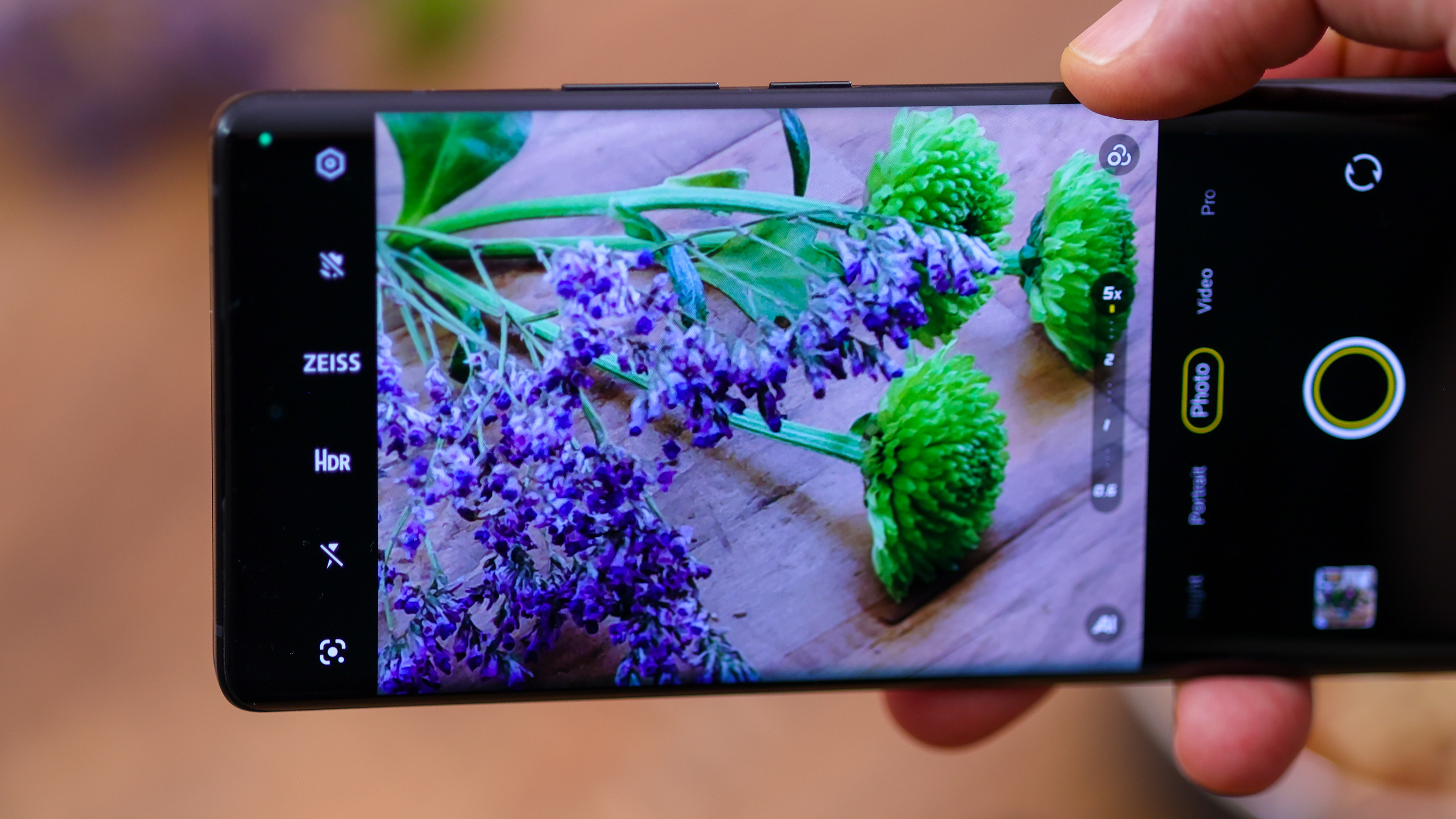
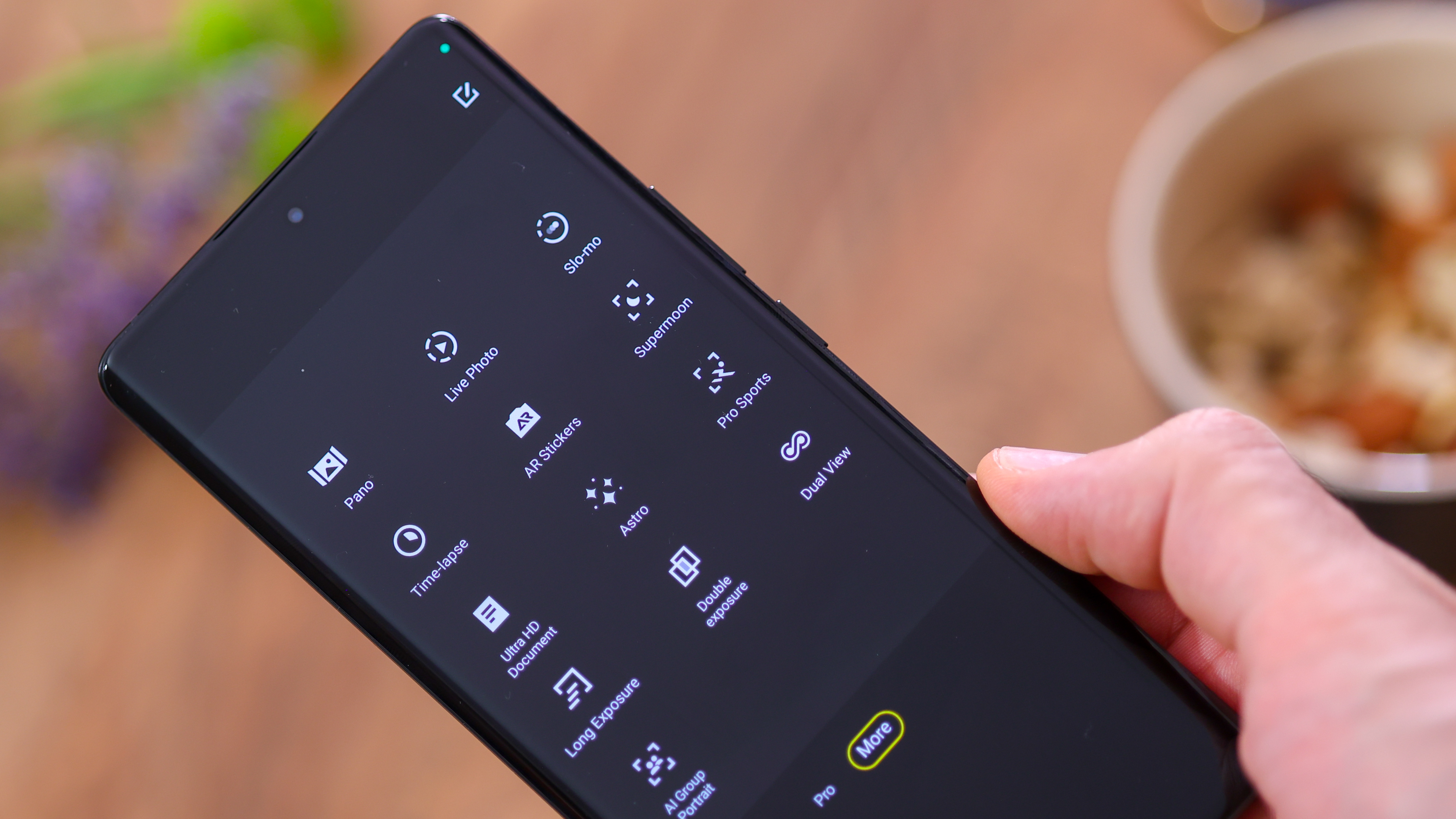
If the Sony Xperia 1 IV is an enthusiast's camera phone that alienates more casual photographers, the Vivo X80 Pro 5G is a great middle-ground that automates most setting but gives users a lot of control over their imaging.
The main camera does a great job of capturing a shallow depth of field when photographing close-up objects up to around 1.5m away – impressive for a smartphone. While the 50mm lens is there for portraits, therefore, the main camera also does an impressive job of capturing faces.
Detail from the main camera is also strong, and while processing is heavy-handed at times, with aggressive sharpening, they nevertheless look pleasing and are information-rich enough to crop into by around three times.
Vivo's contrast and exposure balancing is frequently good but showcases higher contrast than we personally like in many scenes. These situations benefit from SRAW, the brand's take on high-bitrate RAW capture. An example can be found in the image below, a photo of the Samsung Galaxy A53 5G. it highlights ou can eke out a huge amount of shadow detail by switching to this mode and editing images either on-device or in Photoshop at a computer.
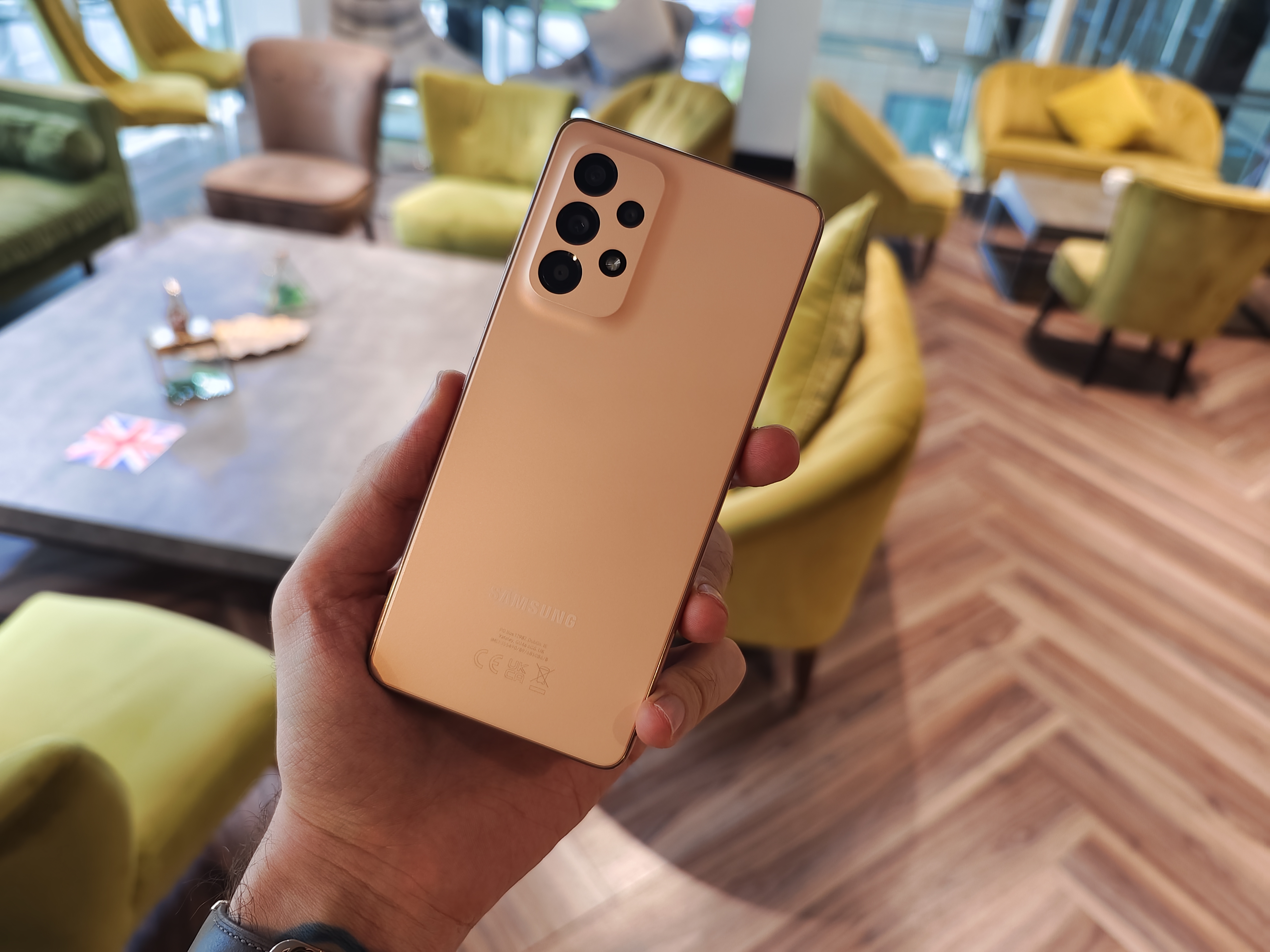
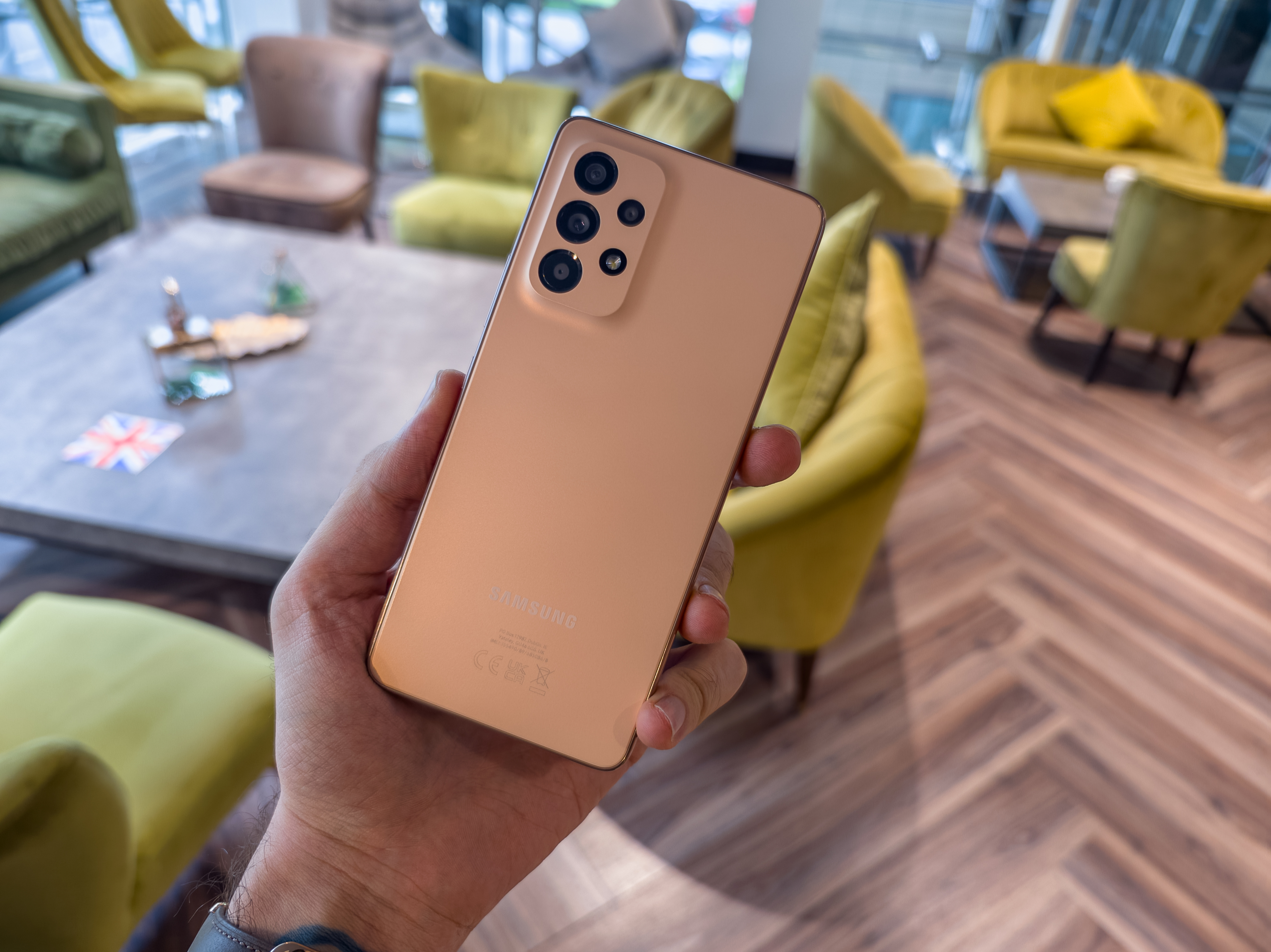
Like the best camera phones around, Vivo automatically fires up long-exposure shooting when the lights drop, saving you from having to switch out to Night Mode. This does a great job of capturing extra detail and works across the camera mix.
The primary camera is the best for night photography with its big sensor, but all the cameras are competitive. Where the telephoto camera mix does fall behind the competition is reach. Vivo's flagship can't stack up to the Galaxy S22 Ultra with its 10x zoom equivalent optical lens, though beats out the iPhone 13 Pro Max.
The ultra-wide camera also doubles up as a macro camera, given the fact it features autofocus, which is seldom seen even amongst flagships. This is a great addition, and while its pure photo quality falls behind the ultra-wides on the Oppo Find X3 Pro and Find X5 Pro, helps Vivo stay competitive when it comes to versatility.
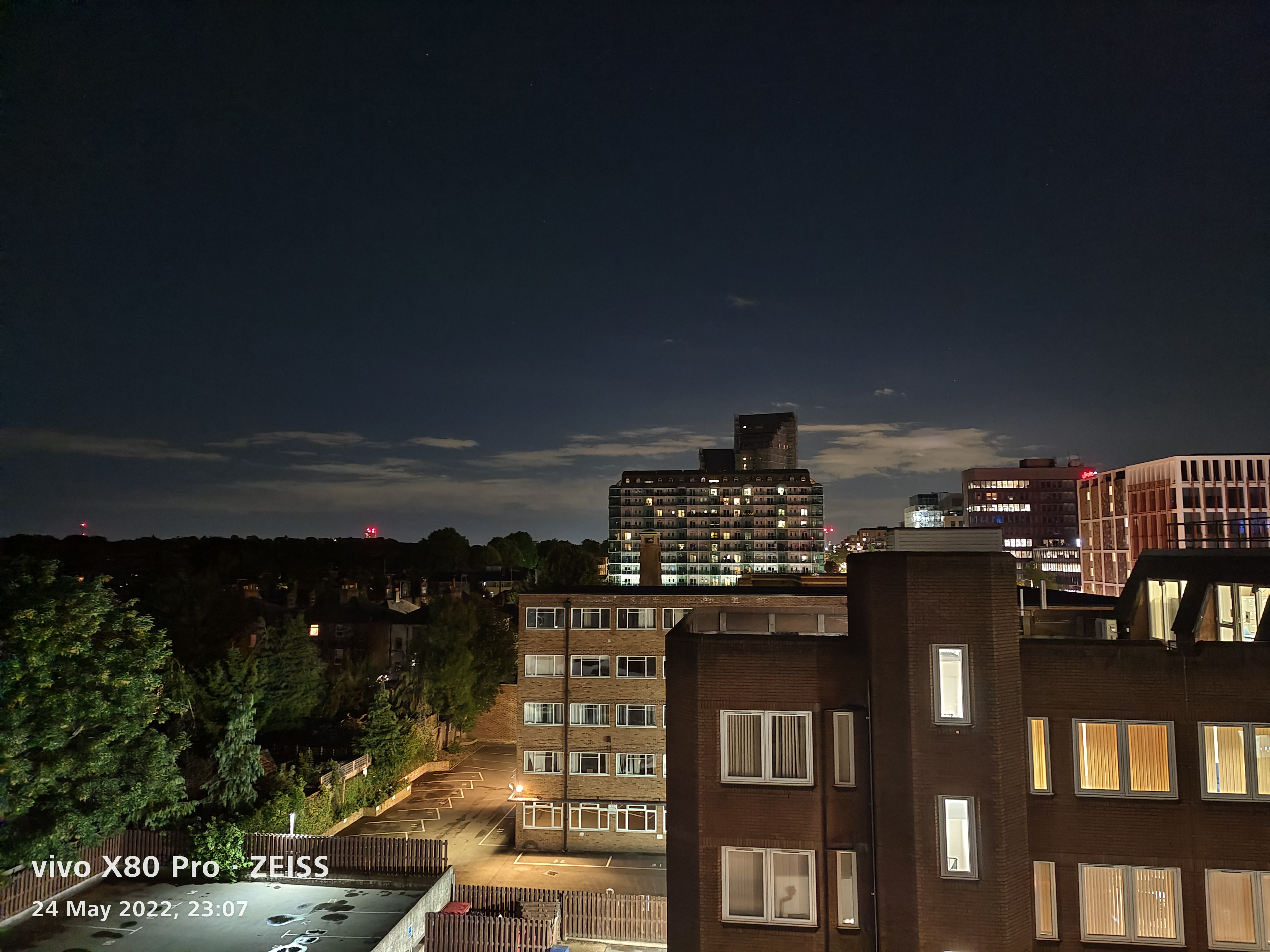
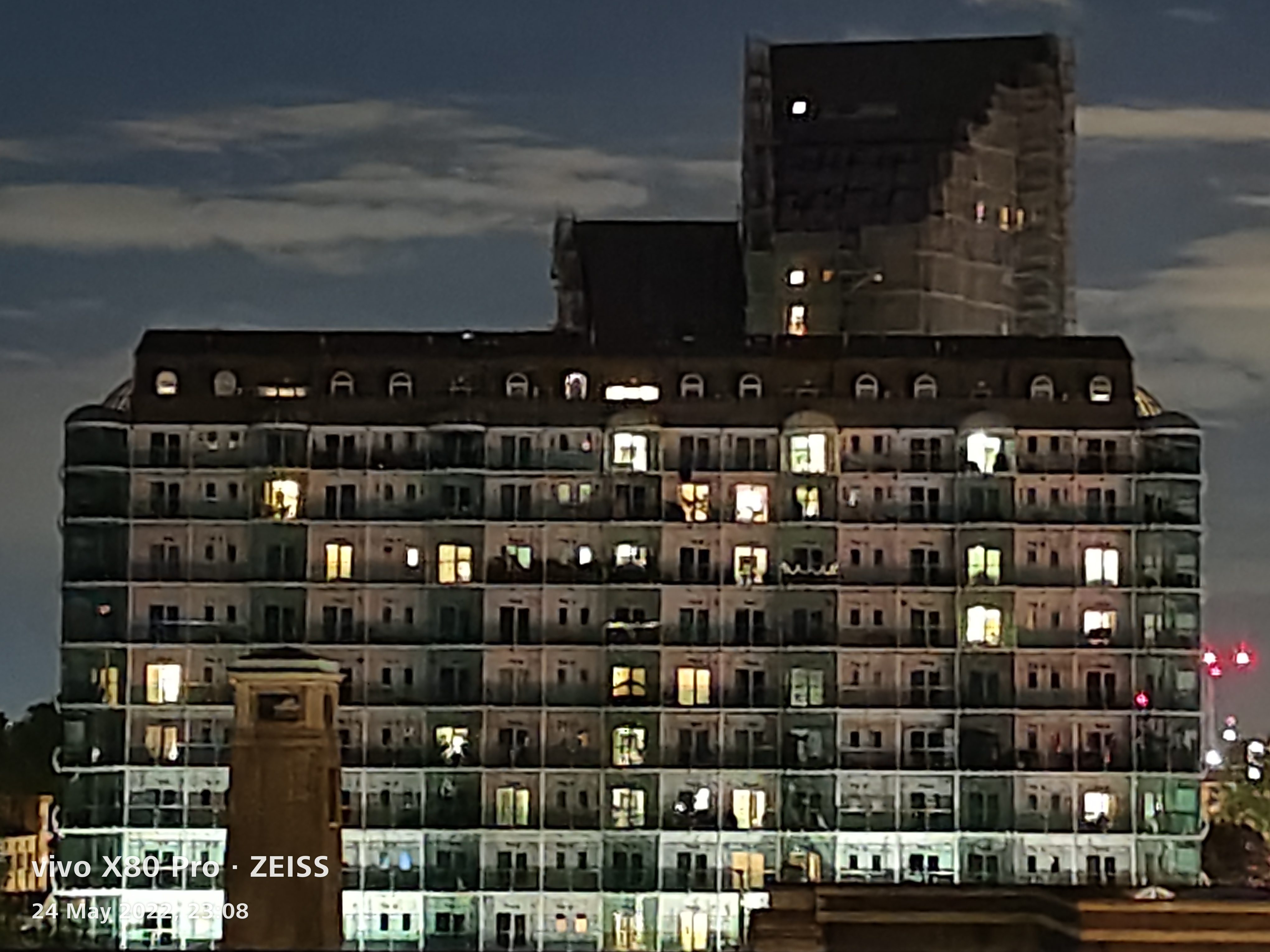




Dwelling on the 50mm gimbal-stabilized portrait camera for a moment, Vivo's decision to add a micro-gimbal to this module initially confused us. Why not just boost the main camera that bit more? That said, after a couple of weeks with the phone, it makes much more sense. The Vivo X80 Pro 5G's cameras don't have a weak link per se, even if the periscope camera is the weakest of the bunch.
What's more, whether you're taking a photo at 24mm or 50mm, the Vivo copes well in challenging light, especially if you don't mind shooting in SRAW and editing your photo later. This is especially handy for portraits.
The portrait mode automatically activates the 50mm camera, and the first photo below was taken with it – though the artificial background blur has been disabled. The result is a very impressive image considering it was taken on an object moving at pace.
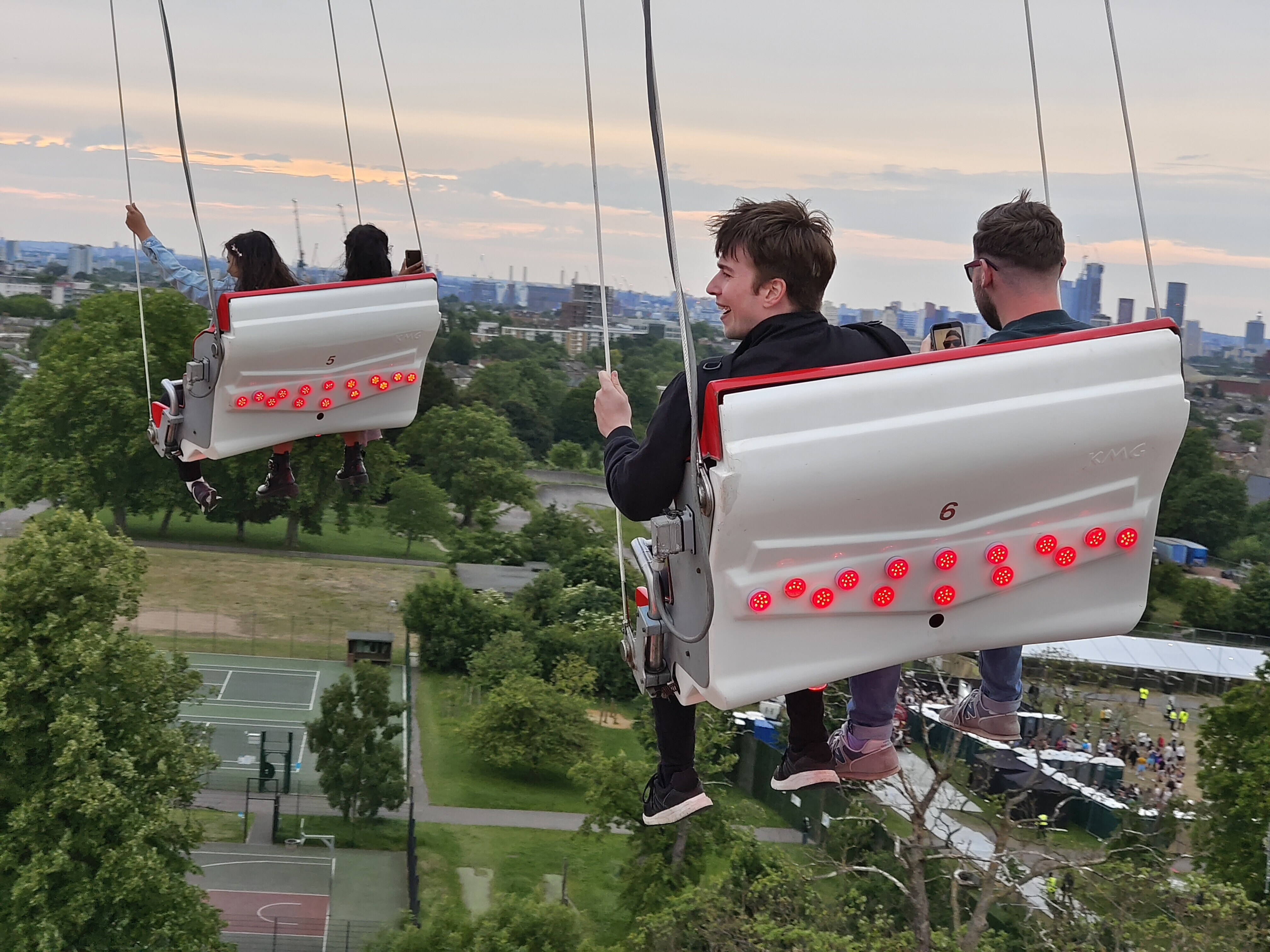

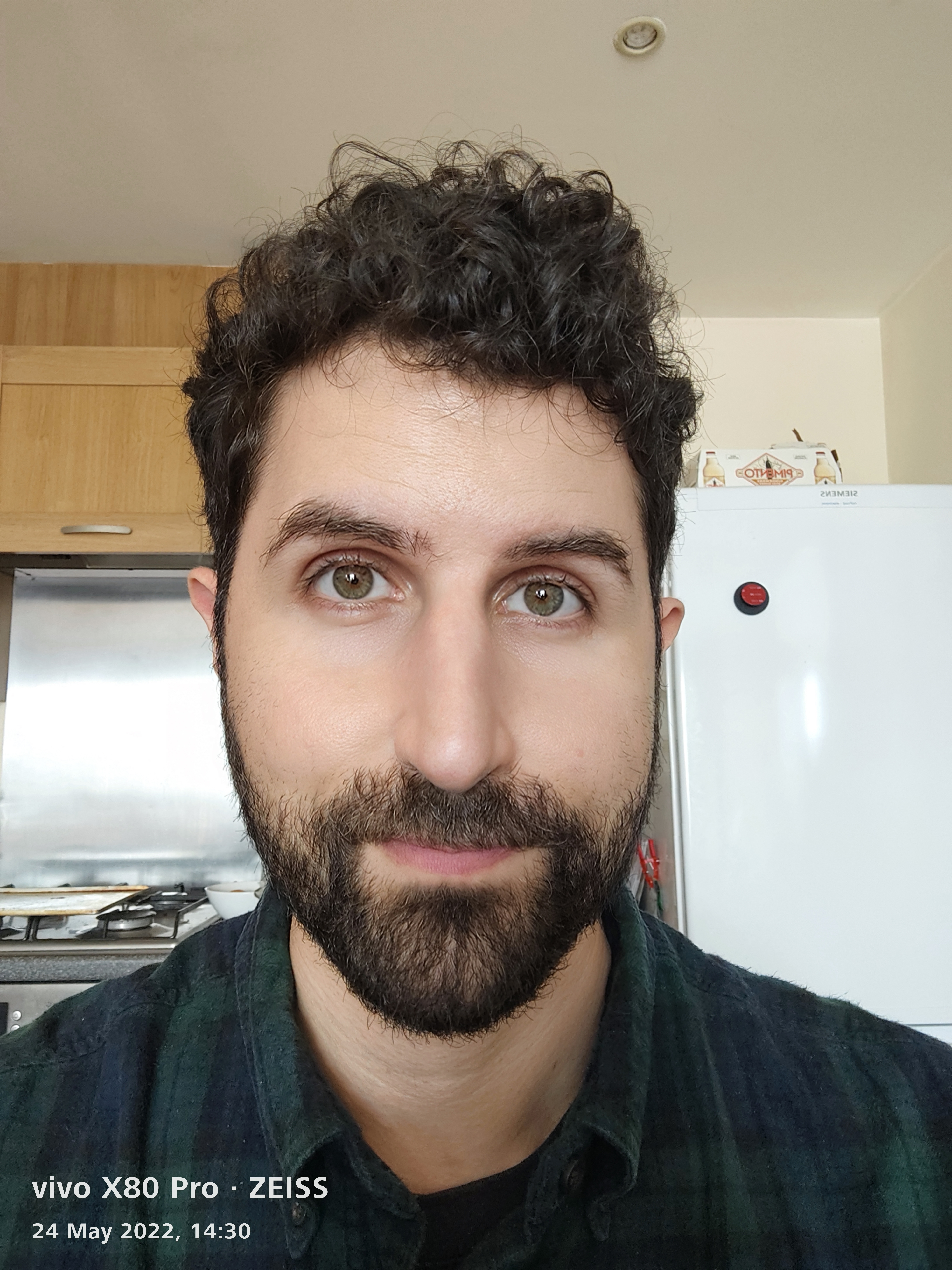

Selfies captured on the Vivo X80 Pro 5G a bit of a travesty as far as we're concerned. Vivo's beauty filters are active by default and are far too heavy-handed, totally distorting reality.
As you can see from the example below, the beauty mode automatically applies make-up to female faces and made other 'beauty' changes. For male faces, the camera smoothed skin and brightened eyes. While this mode would have been okay if it wasn't active by default when we fired up the selfie camera, things are getting out of hand when your selfie camera reflects a distorted reality back at you out of the box.
Videos captured on the Vivo X80 Pro 5G are well held together well and offer varying degrees of stabilization. Focus is fast, though the focal point could be smaller for fine-tuned touch focusing. Footage looks smooth at up to 4K resolution, but 8K capture misses out on rock-steady stabilization, letting some handshake through. With phones like the ROG Phone 5 – a gaming phone that misses out on OIS sporting stabilization all the way up to 8K, we're not sure why Vivo couldn't include it on the X80 Pro 5G.
Additional specs
With an Qualcomm Snapdragon 8 Gen 1 chipset, the Vivo X80 Pro 5G has flagship power, and in turn, flagship power drain and heat production.
Able to handle the latest games at high graphics settings, the phone's screen showcases them to perfection, with the only limitation being heat management. The X80 Pro 5G gets hot after about 15 minutes of playing Genshin Impact or other demanding games. That said, for day-to-day tasks, it stays cool, is responsive and is a treat to use.
Vivo's FunTouch UI, which runs on top of Android 12, has been criticized for being bloated and heavy, and while it still is on the X80 Pro 5G, it's going in the right direction with a clean look and feel. There are nevertheless plenty of customizations to the UI, from the multitasking screen to the way you can deploy widgets. This level of customization invites performance issues, and while we didn't experience too many – the only one being a slight delay on receiving notifications versus an iPhone, for example, experiences online have been inconsistent.
What has been unanimously well-received is the in-display fingerprint scanner, which covers a larger area than any other smartphone scanner we've tried. It reliably and quickly unlocks the phone, even with a damp finger and a clumsy press.
With 12GB RAM, the Vivo X80 Pro 5G is also bolstered by an additional 4GB of system storage that's used as Extended RAM. Storage shouldn’t be a concern for most with 256GB on board.
As for battery life, the Vivo X80 Pro 5G gets a slightly smaller battery than we're used to in flagships. It's 4700mAh, and Android flagships from OPPO, Samsung, and Xiaomi all sport 5000mAh batteries. Nevertheless, in our tests, the Vivo X80 Pro 5G actually outperformed the Galaxy S22 Ultra and Xiaomi 12 Pro when it came to screen on time.
Depending on screen brightness, we were able to make it through a full day with the phone when using it for photo-taking, music playback, and lots of messaging. What wiped the phone out quickly was prolonged gaming and outdoor use in bright scenes, during which brightness was ramped right up.
The phone charges quickly with 80W wired and 50W wireless charging. Powering up in as little as 40 minutes, even if you do struggle to get a full day out of it with heavy use, the fast charging, and the fact the phone ships with an 80W charger should help you get by with a short top-up.
Verdict
The Vivo X80 Pro 5G is one of the best camera phones of 2022, and now it's been officially announced for Europe, with UK availability from July 7, it should be a serious consideration if available in your region.
The X80 Pro 5G isn't affordable and it isn't perfect, but it's a very good camera phone that's stylish, premium, and feature-rich. Its camera system is one of the most complete solutions available thanks to no real weak links. The main camera is strong, the telephoto comes in a close second, and the periscope and autofocusing ultra-wide camera both bolster the system with fair to good performance for the most part.
The rest of the phone doesn't disappoint either. Sure, there's a heavy-handed interface, but if you can get used to that, and we did, the X80 Pro's powerful, has a brilliant screen, good enough battery life, and very fast charging – both wired and wireless.
Alternatives
If the Vivo X80 Pro is too pricey, consider the Realme GT 2 Pro, which at least offers up a decent primary camera experience and an interesting mix of lenses without compromising on power. Alternatively, for anyone who wants more zoom range, the Samsung Galaxy S22 Ultra is bulkier alternative with more range and pen input.
Read more
• The best camera phones you can buy today
• Best Samsung phones
• Best budget phones
• The best phablets
• Which is the best iPhone for photography?
• The best gimbals
• Best phone cases
Basil Kronfli is a freelance technology journalist, consultant, and content creator. He trained in graphic design and started his career at Canon Europe before moving into journalism. Basil is also experienced in video production, independently running the YouTube channel TechEdit, and during his time at Future, he worked alongside the Digital Camera World team as a senior video producer.
